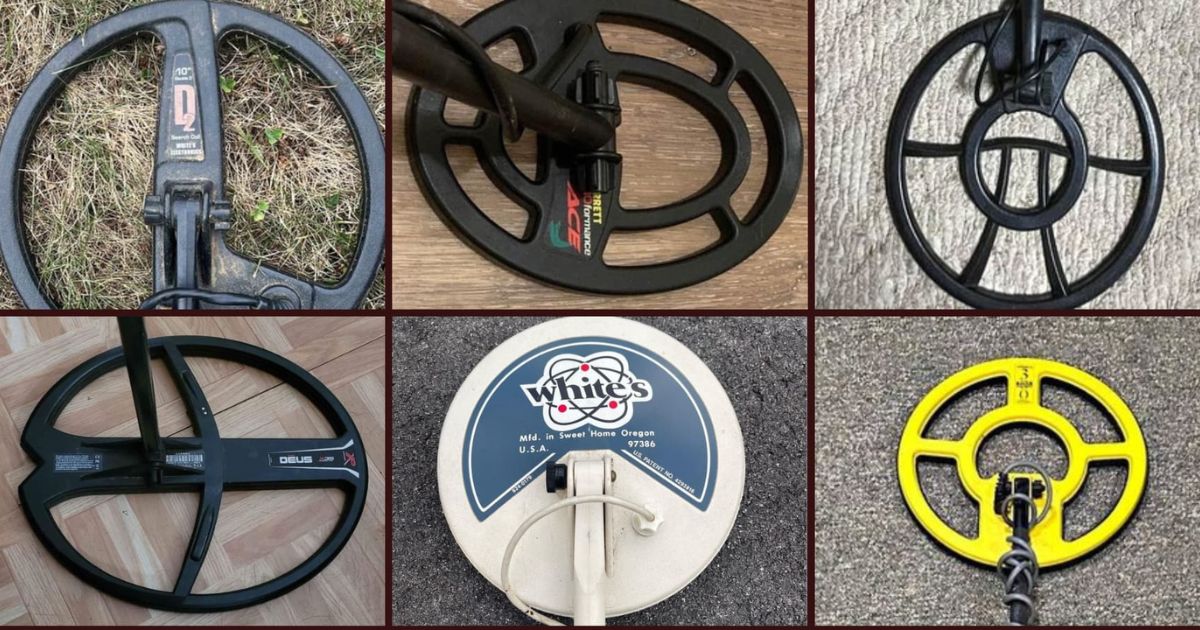A metal detector uses electromagnetic induction to detect metal objects underground. At its core is a coil that produces an electromagnetic field when electricity is passed through it. The same coil is also used to detect changes in the electromagnetic field caused by nearby metal objects. Different coil designs are used depending on the intended application and type of metals being searched for. This article discusses the main metal detector coil types and their uses.
Double D Coil
The double D coil is one of the most common coil designs used in metal detectors. As the name suggests, it has a D-shape on both sides of the handle creating a double D shape. Each D-section has its own separate wire winding that allows it to function independently.
Compared to other coil designs, the double D provides good all-around performance for most treasure hunting applications. Its two lobed design allows it to cover a wider search area than simple coils while maintaining decent sensitivity and target identification. Double D coils are versatile and capable of finding a variety of small to medium sized treasure such as coins, jewelry, artifacts, and more.
Because of its balanced design, double D coils have less interference from minerals in the ground compared to simpler coils. They can effectively discriminate between desired metal targets and mineralized soils for less false signals. Overall, the double D coil remains a top choice for recreational treasure hunting and is included on many entry-level and intermediate metal detectors.
Single D Coil
Single D coils have a similar profile to the double D but with only a single winding. They provide less coverage area than double D’s but maintain good sensitivity for small targets. Single D coils have less bulk than double D’s which can allow for lighter weight metal detectors better suited to extended hunts.
Their simpler single lobe design does come with some tradeoffs though. Single D coils have less advanced target identification capabilities compared to double D’s. They may also experience more mineralization effects in extreme soil conditions. Overall, single D’s are best for basic treasure hunting applications where weight is a primary concern.
Elliptical Coil
Elliptical coils have an oval or elliptical shape rather than the D-shape of other common coils. Their elongated profile provides extremely wide coverage better optimized for larger search areas. Compared to circular coils of similar size, elliptical coils can cover up to 30% more ground.
This makes them well-suited to applications like beach hunting, open field prospecting, and pinpointing larger buried items. Elliptical coils sacrifice some sensitivity for small objects but excel at fast, efficient sweeps to cover large swaths of terrain quickly. Their shape also gives good mineral cancellation to reduce false signals from mineralized grounds.
Due to their wider footprint though, elliptical coils tend to be heavier and less portable than other coils. They work best for planned hunting sessions where the metal detector does not need frequent transport. Overall, elliptical coils are most effective for detecting larger targets over sizable search areas.
Circular Coil
The simplest coil type is the basic circular coil. It has a uniform round shape without lobes. Circular coils tend to be smaller, often in the 4-inch to 6-inch diameter range. Their compact size comes with advantages like lighter weight and better portability compared to other coil designs.
But, their smaller size also means lower sensitivity and a narrower detection field. Circular coils are best for very small and shallow targets or precision applications like gemstone locating. Their limitations make them poorly suited for general treasure hunting where a wider range is needed.
Today, circular coils are rarely used for metal detection outside of specialty applications. More advanced coil shapes offer superior performance for typical treasure hunting tasks. That said, compact circular coils still see use in pinpointing small deeply buried items and training-level educational devices.
Multi-frequency Coils
More advanced metal detectors now feature multi-frequency coils that can be tuned between multiple operating frequencies. These coils may switch between very low frequencies for deep detection up to higher frequencies optimized for shallow treasure hunting.
The ability to adjust the detection field helps compensate for varying ground mineralization and provide more precise control over search depth. Multi-frequency coils can avoid more mineral interference compared to fixed-frequency coils. They also help identify target types through their reaction at different frequencies.
While more technically complex, multi-frequency coils are the state of the art for advanced metal detecting systems. Their flexible design gives experienced users more capability to optimize performance in challenging conditions. Overall detection accuracy is improved since subtle target attributes can be better distinguished through frequency tuning.
FAQ’s
What is the best coil for a metal detector?
The best coil for a metal detector depends on the type of metals being searched for and the surrounding ground mineralization.
How can I check a coil?
Primary and Secondary Coil Testing: Coils typically have a primary and secondary winding. To test the primary winding, set your multimeter to the resistance mode and measure the resistance across the primary terminals. For the secondary winding, set the multimeter to a higher range and measure the resistance across the secondary terminals.
Conclusion
In summary, there are many coil designs used in metal detectors optimized for different uses. Factors like coverage area, sensitivity, target identification, weight, size and ground tolerance must all be balanced for the job at hand. For most recreational treasure hunting, balanced double D coils deliver good all-around performance while elliptical coils excel at large searches. New multi-frequency coil technology further enhances precision and versatility. Choosing the right coil is key to getting the best results. Learn more information “Metal Detector Coil Types“











